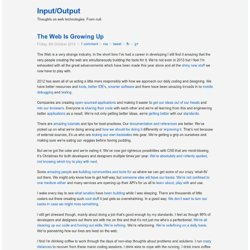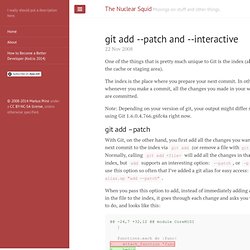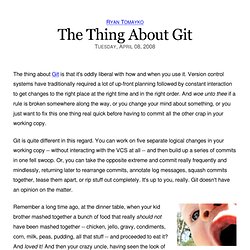Zoom
Trash

{ io: The Web Is Growing Up } The Web is a very strange industry.

In the short time I’ve had a career in developing I still find it amazing that the very people creating the web are simultaneously building the tools for it. We’re not even in 2013 but I feel I’m exhausted with all the great advancements which have been made this year alone and all the shiny new stuff we now have to play with. 2012 has seen all of us acting a little more responsibly with how we approach our daily coding and designing.
We have better resources and tools , better IDE’s , smarter software and there have been amazing inroads in to mobile debugging and testing . Companies are creating open-sourced applications and making it easier to get our ideas out of our heads and into our browsers . There are amazing tutorials and tips for best-practices. But we’ve got the cake and we’re eating it. Some amazing people are building communities and tools for us where we can get some of our crazy ‘what-ifs’ out there. HTML5 Rocks - A resource for open web HTML5 developers. Drawing shapes. Guide to getting involved with standards and browser development.
Sadly, A brunch that doesn't involve bacon. Sadly, A brunch that doesn't involve bacon How it starts When Snip.it first launched, we had a fairly typical Rails stack, with the majority of view logic taking place on the server side.

And like many web applications, as the application grew, we came to increasingly rely on Javascript for user interactions. Whether it’s a simple ajaxy button or a complicated piece of form validation, if you’re not careful, your oh-so-DRY code on the Rails side soon becomes filled with duplicated client side functionality. A move to Backbone.js For us, the solution seemed to be the easy choice of moving to a more structured JS framework like Backbone.js. If you’re familiar with Backbone.js, then you’re probably also familiar with the amazing Addy Osmani and his book Backbone Fundementals. Brunch to the rescue At it’s core, Brunch is just a Node.js based build tool for developing and deploying HTML5 apps. Brunch handles our four main areas of concern. Where do we go from here Resources for your perusal. HTML5 application assembler. Interactive. 22 Nov 2008 One of the things that is pretty much unique to Git is the index (also known as the cache or staging area).

The index is the place where you prepare your next commit. In other systems whenever you make a commit, all the changes you made in your working copy are committed. Note: Depending on your version of git, your output might differ slightly. I’m using Git 1.6.0.4.766.g6fc4a right now. Git ready » learn git one commit at a time. Modern workflows for modern webapps. Initializr - Start an HTML5 Boilerplate project in 15 seconds! The Thing About Git. The thing about Git is that it's oddly liberal with how and when you use it.

Version control systems have traditionally required a lot of up-front planning followed by constant interaction to get changes to the right place at the right time and in the right order. And woe unto thee if a rule is broken somewhere along the way, or you change your mind about something, or you just want to fix this one thing real quick before having to commit all the other crap in your working copy. Git is quite different in this regard. You can work on five separate logical changes in your working copy -- without interacting with the VCS at all -- and then build up a series of commits in one fell swoop.
Or, you can take the opposite extreme and commit really frequently and mindlessly, returning later to rearrange commits, annotate log messages, squash commits together, tease them apart, or rip stuff out completely. I'm not saying this is the Right Way to use Git: in the end, it all goes to the same place.